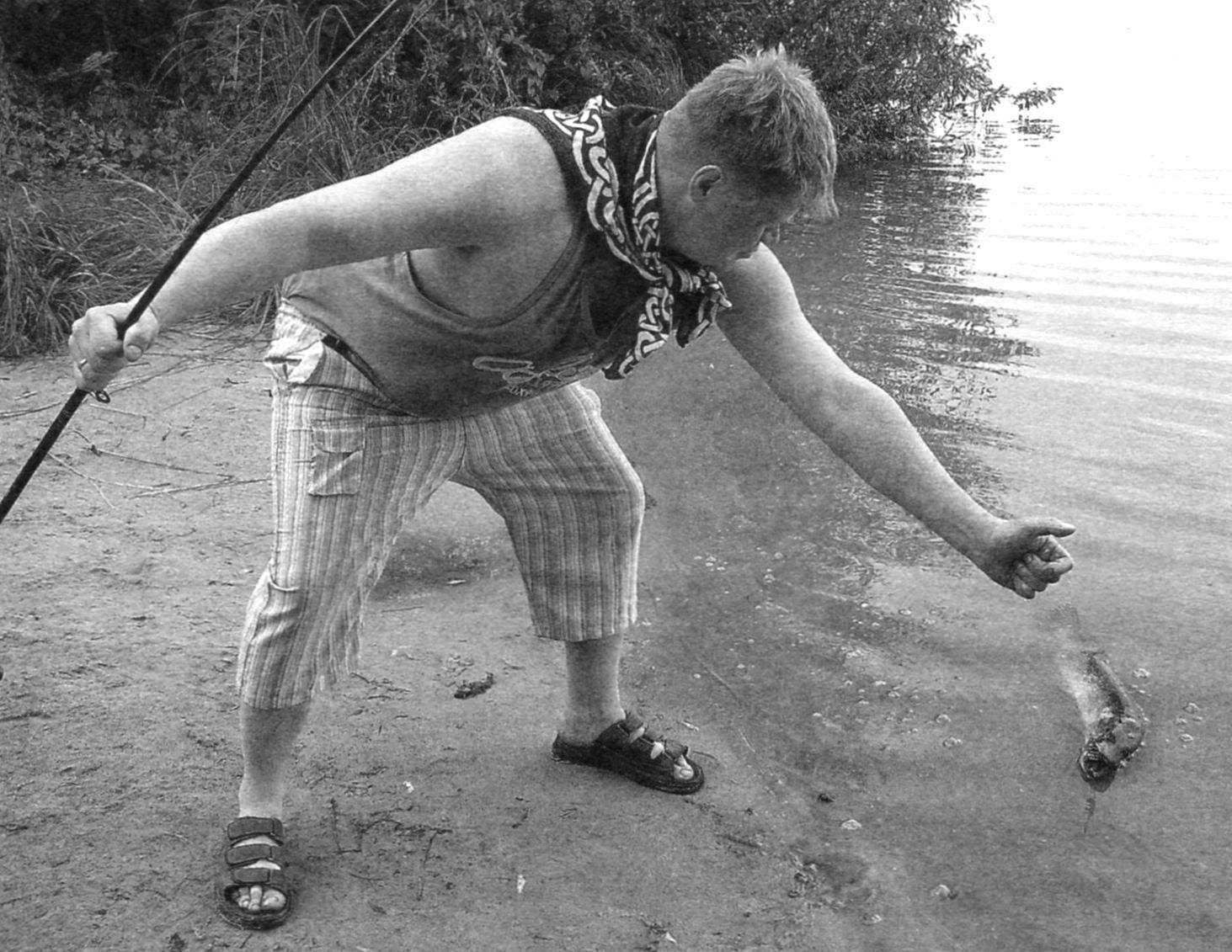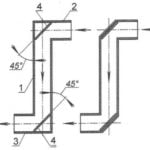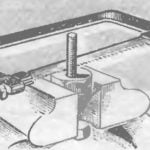 Talk about a rather unusual method of catching fish using an electronic simulator of the lure. As the simulator is used “samplevalue” fish toy. Before the use of “in case” it needed paint and a little work. This will be discussed further. “Camoflauge” fish originally intended not so much for fishing as for “simulation” purposes – in aquariums. However, reviewing and examining carefully a fish, I was convinced that it could benefit not only a toy but also as an effective fishing lure.
Talk about a rather unusual method of catching fish using an electronic simulator of the lure. As the simulator is used “samplevalue” fish toy. Before the use of “in case” it needed paint and a little work. This will be discussed further. “Camoflauge” fish originally intended not so much for fishing as for “simulation” purposes – in aquariums. However, reviewing and examining carefully a fish, I was convinced that it could benefit not only a toy but also as an effective fishing lure.
To do this, inside her body, you must install a double or triple hook eyelet which will be the means to her trailer to a leash.
Need the bait, its length 5.5 cm double robe hook (double) No. 10 (“ten”) and leashes. I used a 25-centimeter (length), which are calculated on the weight of the gap 20 kg. and, of course, the line is designed for not less than 20 kg (to divide).
Double hook is permissible to replace the tee of the same form factor.
To install the bait fish inside it don’t even need to parse, though – as a variant – it is possible and this method is: disassemble the plastic case, “fish,” into two parts (with a screwdriver, the working surface which wedges into the glued part of the body of the lure), implement inside the hook and glue the two halves in reverse order – with the use of any “instant” adhesive plastic it glues very well.
If you insert the hook into the fish on the second option, which I like, it’s even easier. Hook clamp pliers with insulated handles and heated conventional lighter (will fit a gas ring stove, electric stove, any open source of fire) to the redness of the metal. Then quickly (without wasting time) to insert it in their free e-filling part of the plastic body of the lure.

What we need to create a simulator bait
Therefore, get a good simulator of the lure. Now, not attaching to the hook on the leash, will test the device in any local capacity, checking whether electronics, do not hurt it when installing into the body of the hook.
After the home tests, as usual, transferred to practical on the ground. Because the proposed and tested method is useful not so much for trolling, but for the imitation fish, the tests conducted in shallow water.
Fish are equipped with an electronic circuit and position sensors. Her tail is moveable element and vibrates for 10 seconds; this is repeated 2 to 3 times per minute. Therefore, the fish almost constantly is in movement, naturalistic copying the movement of these fish, rising and falling (varying the depth of immersion) vibration of the tail. This happens in stagnant water.
In the lower part of the body of a fish in compartment for 2 batteries is a small, stacked Bob, regulating the depth of its submersion. If the fish is “drawn” to the bottom, reduce the weight, if it floats closer to the surface – add.
After fishing simulator is dried to be ready to use next time. Battery lasts for about one month of active fishing with daily use for 3 hours.
When tested in August 2013 in running water at a relatively shallow river Kapsha, in the Leningrad region, the lure did not disappoint and proved to be quite promising as a “weapon” of fishing… the grayling, which comes into our waters from Ladoga for several decades. In running water “samplevalue” fish change direction under the influence flows.
Identified and constraints to use: first, the simulator is not effective for trolling because of its quality “own speed” in this kind of fishing is simply not needed.
And secondly, in my practice – the results of fishing – it is effective in shallow water, in creeks. It can be the backwaters of the lake or river, near reed.
The use of bait in thick grass under the water is also inefficient -because of the possibility of its rapid loss, tangled in the seaweed.
However, despite these identified practical limitations, the simulator of the bait shown by the results. In addition to the imitation fish, such imitation bait is convenient to impose instead of the spinners; the leash with carabiner make it easy to change the bait.
When casting in shallow water with a depth of immersion of the simulator 50 – 70 cm caught two duchonka.
In may 2013 the first 700 g took simulator about an hour after installation. The second on the following day, towards evening. In both cases, the imitation fish was set 10 meters from the shore, near the reeds.
It is interesting to note that such good results are obtained in late spring when the predators begins (or continues) “spring feed”, while in the summer, despite the active use considered design, the results were almost gone, autumn too. In this context, used the qualifying word “almost” for good reason: there were cases when “krupnyakov” tasted our bait, but soon spat out, as when fishing by the method of imitation fish hard instantly hooking the fish, and… the time lost, the teeth of the predator only badly tarnished the simulator, which subsequently had to restore.
Hence, the effectiveness of this method, you can expect more in the spring. And there is a natural explanation.
Ironically, fish is not such a “fool” as it seems at first glance. In practice, of experiments it is established (confirmed) that pike and perch not swallow the bait immediately, she falls into the mouth of the fish is recognized, but not swallowed, and if a predator feels (metal hook, a leash, a case of “fish”) that he had been deceived, immediately spits out the simulator. This has happened more than once.

The installation “double” in the bait
Therefore, the proposed method is very effective in the company Jora, when the fish are hungry and take everything offered, that is swallowed at once. In addition, my experience is you can take as a basic example, and develop further, to improve both technique and design baits; no one is deprived of the opportunity to do better.
Two words about the design. “Electronic fish” is designed for permanent submersion in water, her body tight. The temperature of the crystals has a wide range: from -10 to +50° C. And this range due to the use of batteries. In “the fish” compactly installed two batteries of type LR44, A76 (or similar in size and voltage), a voltage of 1.5 volts each, they are connected in serial electric circuit, and therefore, the equivalent voltage is 3 V.
The electronic circuit consists of a dip sensor (located on the sides of the body of “fish” – black spots near the eyes) and a control Board relay. Miniature relay with frequency 10 to 15 Hz attracts the anchor towards the base which is attached the tail of the “fish”. Thus there is a vibration, and the tail is deflected to the left and right (above frequency); that is the way to sailing simulator. But the vibration is not constant, but periodically. The fish swims, it dies, sinks to the bottom. This is the best – creates the effect of “wounded” extraction, which can be easy to take.
At completion device (preparation for fishing), preferably tail glue instant glue to the vibrating rod (so as not to lose in case of a hook at the bottom).
A positive feature of the lure and that during the fishing it almost did not need to do: threw, set alarm beacons and wait for a breakthrough. The method of fishing reminds fishing on the Donk. Well, if the beacons are swayed and do not miss your chance.
The prospect of the use of the simulator can take place in the “hunt” for the burbot, large perch, salmon and grayling, also in shallow water.



